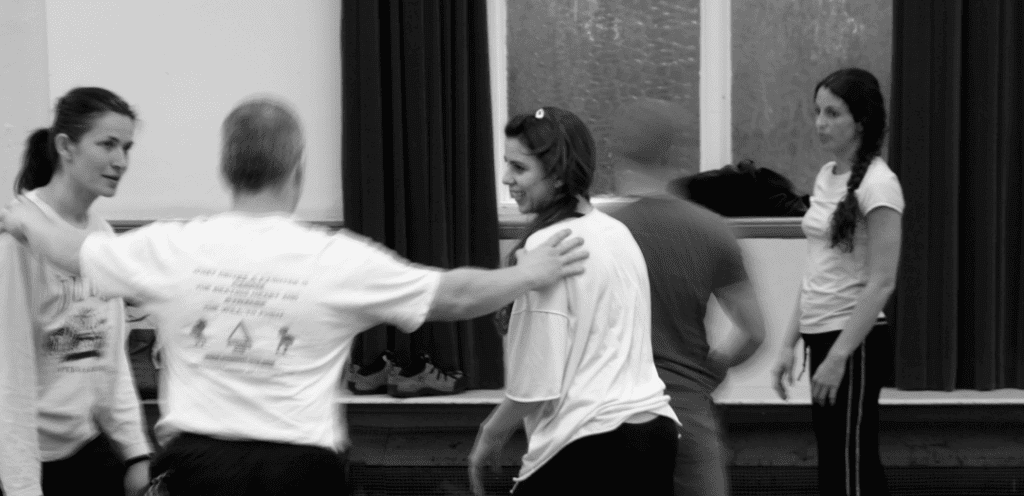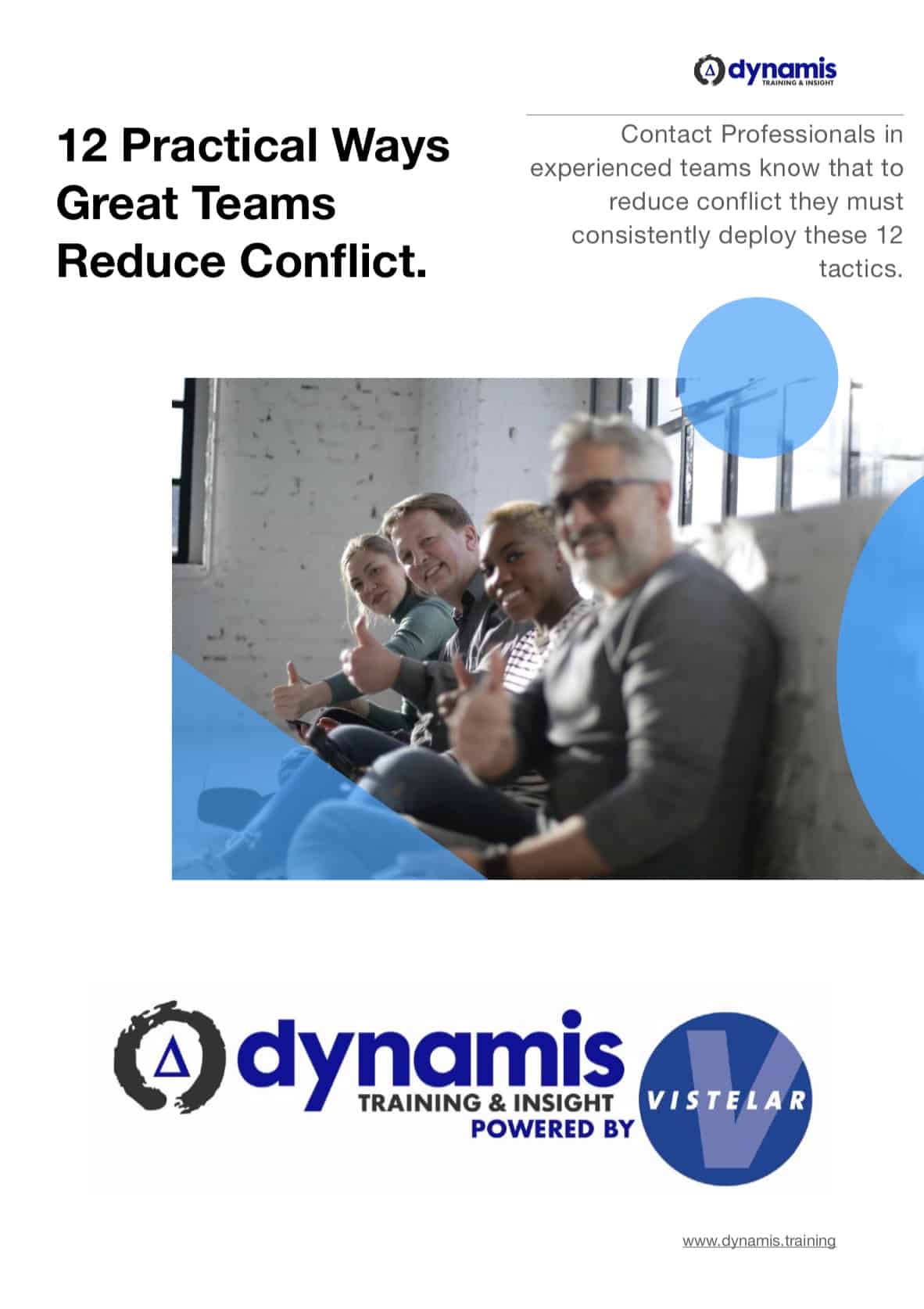Self-Efficacy: Conflict Management is about more than just ‘Techniques’
When people learn that they can master tasks, they start to develop a feeling of self-efficacy – the expectation that they will be competent and successful at a particular task.
The feeling of self-confidence is something slightly diffferent – it is a more general feeling the person has, but which is not tied to a specific task.
For example, a member of a health or social care team may have particular expertise in understanding family law or criminal justice procedures, but may not have competence in dealing with aggressive behaviour from service users.
Research has found that people with high levels of self-efficacy try harder and persist longer, whereas people with lower levels of self-efficacy tend to give up in the face of difficulty, tend to attribute failure to internal causes (blaming themselves) and experience greater anxiety and depression after they have been challenged by a task which they failed.
When considering training their staff in conflict management, or personal safety, breakaway or physical intervention tactics, managers often wonder if the training will result in:
- overly assertive staff, bullying their service users
- use of excessive or unnecessary force to deal with situations
- more frequent use of physical responses to deal with conflict
In our practice, we have in fact seen the exact opposite of this occur, following training with teams: they often become far more effective at defusing conflict than prior to the training. One of the reasons for this is self-efficacy in dealing with physical conflict!
DEVELOPING SELF-EFFICACY IN CONFLICT SITUATIONS
Classically, self-efficacy comes from four sources:
Past Performance, where previous experiences provide information upon which self-efficacy is built. Experiences of success increase self-efficacy, whereas experiences of failure may reduce it or prevent its development. Past success is the most powerful influence on self-efficacy; once it is established, the individual is better able to tolerate failure. Similarly, past failure lowers expectations for future success and reduces motivation.
Vicarious experiences, where watching others successfully perform the task increases feelings of self-efficacy. The individual will approach their own efforts with more confidence if they have seen others achieve success. This factor is also known as modelling .
Verbal Persuasion is a way of increasing self-efficacy through the use of positive coaching and encouragement (telling someone they are good at something). This has been found to be a less-powerful way of increasing self-efficacy, though.
Arousal Control, specifically the positive interpretation of arousal can be critical in the development of improved performance and thus the development of self-efficacy.
Self-Efficacy develops best when performance is linked to an individual’s efforts rather than their innate ability.
SELF-TALK AND SELF-EFFICACY DURING CONFLICT
Consider a community worker (who has had no training in conflict) who one day is confronted by an angry service user who encroaches into her space and waves her fist at the worker, using threatening language and behaviour.
The negative self-talk we could expect of the untrained worker here could potentially be:
“Oh god, please don’t hit me! How did I get into THIS situation! What do I do now? What if she hits me? Will I get into trouble? Is this MY fault? Is it going to hurt? What if SHE gets hurt! I’ve never been in a fight in my LIFE!”
Now, compare this to the positive self-talk we could expect of a worker who has been properly trained (possibly using a Stress Exposure Methodology as we do at Dynamis ) in what to expect and how to deal with conflict:
“Okay….this is serious! Must watch proximity…use my hands as a barrier. NATURAL body language. If she strikes out at me, then I *do* have options. BREATHE!. Ask the GOLDEN QUESTION…..slow things down. I’ve done this before – it feels just like when the instructor did the role-play in training. Lets make some progress….”
One key question here is: which person will have more endurance in seeking a successful resolution to the conflict? While neither worker could be considered ‘calm’, it is likely that the trained worker is calmer, therefore her performance in defusing the conflict is likely to be far better and her persistence in finding a solution will last longer.
Under the threat of assault, questions will naturally arise for any person:
- “Why can’t I defuse him?”
- “How am I going to protect myself if he attacks me?”
- “What am I allowed to do to protect myself?”
For the worker with self-efficacy in using physical interventions (self-defence or restraint) in a situation, there are answers to these questions. She will have positive evidence of past performance (through progressively intense training exercises which support her own ability) . She will have seen her colleagues and peers successfully navigate physical confrontrations (through watching and taking part in dynamic simulations). She will have received much encouragement and motivation from her trainer and she will have been taught how to interpret physiological arousal positively.
For the worker without training however, there are only questions and potentially negative self-talk.
As an aside, social conditioning (such as laid out by Ellen Snortland in her excellent “ Beauty Bites Beast ”) contributes to less-desirable self-talk – psychologically and emotionally depriving women in particular of their innate protective instincts and defensive power. Simply, the ‘knight in shining armour’ who women are conditioned to expect to appear in conflict situations, rarely appears!
In health and social care, the ‘do no harm‘ doctrine serves as an equivalent mechanism: it convinces workers that their safety has comparitively little value relative to the service user’s. These issues collide and lead to anxiety, hesitation and, comparitively poorer performance during conflict.
TRAINING OUTCOMES
Competent training in personal protection (self-defence skills) or physical intervention and restraint skills, when delivered by a professional trainer, often has the indirect result of increasing self-efficacy.
Coaches should ensure their training course delivers:
- (comparitively) positive experiences
- modelling of successful approaches
- positively stated encouragement and motivation
- knowledge and information about physiological arousal and its effects
Workers will then go back to their workplace with a self-confidence in regard to physical conflict which actually transfers positively to their ability, comfort and performance in verbally defusing conflict BEFORE it becomes physical. This is a very positive result!
Staff get better at resolving situations non-physically because they have confidence in responding if the situation calls for a physical intervention.
Coaching tips for developing self-efficacy in conflict:
- Give learners opportunities to experience success. Show them what they are capable of, what is within their ability EARLY and OFTEN.
- Show that you have confidence in the learner’s ability. Act confidently and encourage confidence.
- Set attainable goals and meet them, recognise when they are met. Do not force failure.
- Help learners to attribute success to their own efforts
- Encourage positive self-talk. Do not re-inforce negative attribution.
- Offer ideas for using imagery to visualise success
- Ensure that physiological arousal is understood in a positive way
At Dynamis we deliver Conflict Management Course which incorporates training models and drill progressions which are designed to produce Self-Efficacy for learners in many differernt kinds of environments, from teaching children, to teaching adult survivors of abuse and those whose job is to go into high-stress-confrontations.

Gerard O’Dea is a conflict management, personal safety and physical interventions training consultant. He is the training director for Dynamis, a specialist in personal safety and violence reduction initiatives and the European Adviser for ‘Verbal Defense and Influence’, a global programme which addresses the spectrum of human conflict. www.dynamis.training
Gerard’s book on Lone Worker Personal Safety: http://www.amazon.co.uk/dp/1494759217



